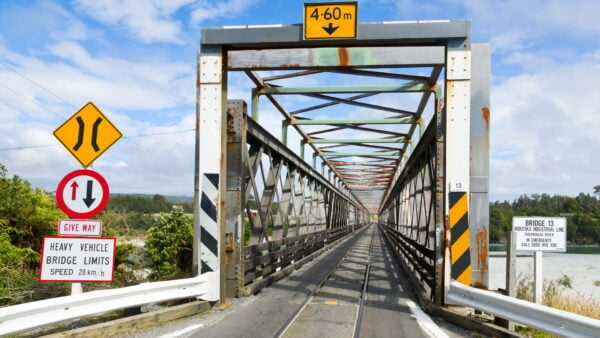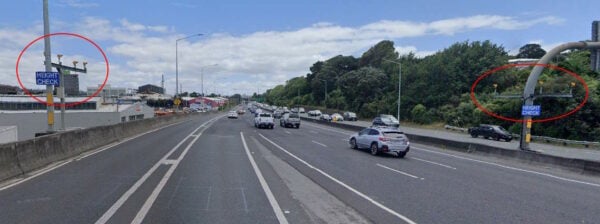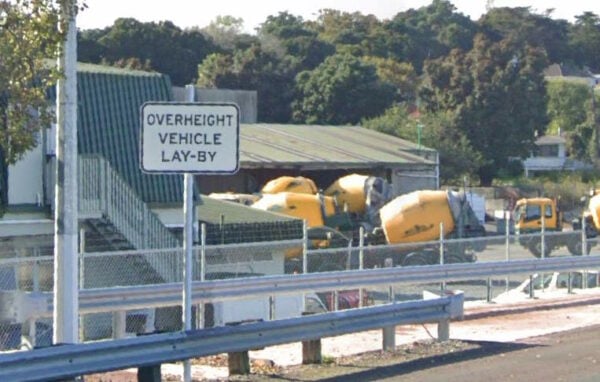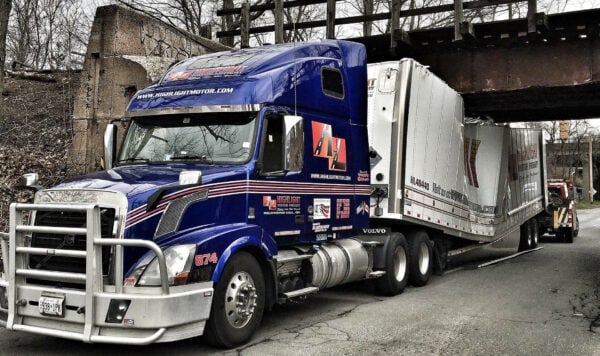New Zealand has a large number of roads that pass under bridges for roads, rail and pedestrians. The legal maximum height for a vehicle before a permit is required is 4.3m, and the majority of bridges fall into that category, meaning there’s no issue with a vehicle under the legal height passing underneath them.
Some bridges, however, are lower, and some vehicles are taller than 4.3m (either deliberately or inadvertently).
Bridges may have a height sign that shows the lowest height (the bridge will vary slightly in height above the road because roads slope for drainage, and the bridge may also change elevation.)

Bridges might also have sensors before the bridge that detect overheight vehicles.

A warning is then displayed on a separate sign further up the motorway. This is used in places like the Penrose Road motorway overpass which is frequently hit, despite having 4.41m clearance southbound and 4.45m northbound.

On motorways, the vehicle can exit at the offramp and rejoin at the next offramp, unless not permitted.
When operating an overheight vehicle, it is necessary to get an overdimension permit from NZTA which may require you to do a pre-travel route check, get any required permissions (e.g. from rail operators), and comply with any vehicle lighting and piloting requirements. Emergency services may need to be notified.

